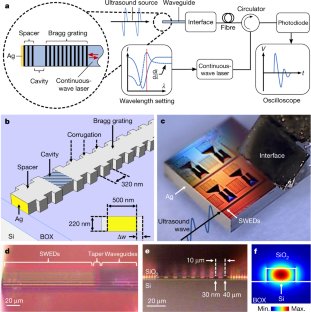(3D printed ‘invisible’ fibres can sense breath, sound, and biological cells)
2020/9/30 英国・ケンブリッジ大学

・ ケンブリッジ大学が、人間の毛髪の 1/100 の細さのファイバーセンサーを作製する 開発。
・ 同技術は、導電性ファイバー作製とファイバー・回路の接続を統合したワンステップの製造プロセス。高純度の導電性ファイバーコアを保護ポリマー被膜で覆った、銀または半導体ポリマーのコアシェルファイバー構造を作製する。
・ 同技術によるファイバーセンサーは、従来の薄膜ベースデバイスを超える高機能を有し、軽量、安価、微細で簡単に利用できるため、一般の人々が自ら試験を実施して環境の情報を獲得できる、家庭用試験デバイスへの応用も考えられる。非接触型のウェアラブルなポータブル呼気センサーは高感度、低コストで、携帯電話に取付けて呼気パターンや音、画像等の情報収集が可能。
・ 同ファイバーセンサーでマスクから漏れる呼気の飛沫量を試験したところ、特に速い呼吸のモニタリングにおいて市販のセンサーの性能を大幅に上回ることを確認。同センサーはウィルス粒子を検出しないが、コロナウィルス等は呼吸器飛沫やエアロゾルによる感染があるため、マスクから漏れ出る呼気飛沫の量と方向の計測は防護における欠点の指標になると考える。
・ 布・不織布マスクでは咳と共に前面から飛沫が漏出し、N95 マスクでは顔面に密着した上部と両脇から漏出することを確認。両タイプとも正しく装着することで呼気の流れを弱めることができる。
・ 微細な導電性ファイバー製のセンサーは、従来の薄膜デバイスに比べ、流体や気体の 3D 体積センシングに特に有用だが、これまではプリント作製後デバイスへの組み込みや大規模製造が困難であった。
・ 同 3D プリンティング技術では、呼気センサーの他に生体細胞ほどのサイズの生体適合性ファイバーの作製も可能。生体細胞の挙動を誘導し、このような動的なプロセスを電気信号として検出する。また、極めて微細なファイバーは不可視なため、電子素子の 3D 接続に使用すると、それらが空中に浮いたように見える効果もある。
・ 今後は、モバイル式の健康モニタリングに向けてより多様な呼気の種類を検出できる、マルチ機能センサーを作製する 3D プリンティング技術を開発する。
URL: https://www.cam.ac.uk/research/news/3d-printed-invisible-fibres-can-sense-breathsound-and-biological-cells
<NEDO海外技術情報より>
(関連情報)
Science Advances 掲載論文(フルテキスト)
Inflight fiber printing toward array and 3D optoelectronic and sensing architectures
URL: https://advances.sciencemag.org/content/6/40/eaba0931
Abstract
Scalability and device integration have been prevailing issues limiting our ability in harnessing the potential of small-diameter conducting fibers. We report inflight fiber printing (iFP), a one-step process that integrates conducting fiber production and fiber-to-circuit connection. Inorganic (silver) or organic {PEDOT:PSS [poly(3,4-ethylenedioxythiophene) polystyrene sulfonate]} fibers with 1- to 3-μm diameters are fabricated, with the fiber arrays exhibiting more than 95% transmittance (350 to 750 nm). The high surface area–to–volume ratio, permissiveness, and transparency of the fiber arrays were exploited to construct sensing and optoelectronic architectures. We show the PEDOT:PSS fibers as a cell-interfaced impedimetric sensor, a three-dimensional (3D) moisture flow sensor, and noncontact, wearable/portable respiratory sensors. The capability to design suspended fibers, networks of homo cross-junctions and hetero cross-junctions, and coupling iFP fibers with 3D-printed parts paves the way to additive manufacturing of fiber-based 3D devices with multilatitude functions and superior spatiotemporal resolution, beyond conventional film-based device architectures.



